We spent the last few hours in Venice watching the sun set over the sinking city and wondered what it would be like the next time we would return. After a quick dinner, we grabbed our bags and headed for the train station. The 12 hour train ride would be our last, as our Eurorail would have expired the following day. So we ended our land travel in Europe the same way we started, with an overnight train ride from one country to another. It would be yet another overnight on the rocky trains for Rav and I. It is something we have become accustomed to by now and I was a little overwhelmed by the fact that this would be our 54th train ride in the last three months. It was a restless night for the two of us as we shared the cabin with two men, one traveling back to his family in Denmark and the other to Salzburg. The trained pulled into Vienna Westbanoff Station a little after 8 am and the temperature could not have been more than 5 degrees. Needless to say, it was a very cold walk through the streets of Vienna as we made our way to Lauria Apartments which we had booked through the internet for 34 Euros a night.
After some fumbling through the side streets, we finally found our destination at 77 Kiasrstrabe St. There we were greeted by a wonderful woman whom spoke English fluently and gave us detailed instructions on the apartment as well as answering all of our questions that we would have for the tourist office. It was the first time in a really long time that we did not have to wander through the streets aimlessly looking for accommodation. The apartment was not really what we had in mind, but we did make the best of it, using the kitchen facility to our advantage.
 Bunk beds for two… finally some peace and quiet
Bunk beds for two… finally some peace and quiet So I thought!
So I thought!We stocked the fridge for our stint in Vienna before heading into the center of town to check out some of the sights.
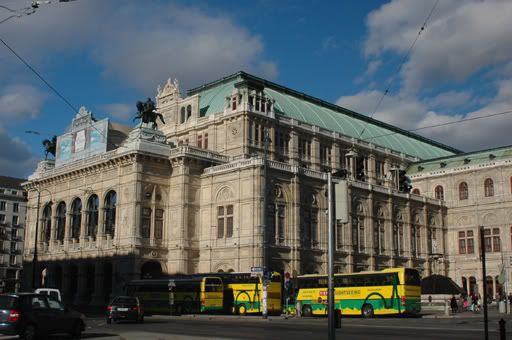 The opera house of Vienna – We tried to get tickets to see a show there but there was standing room only
The opera house of Vienna – We tried to get tickets to see a show there but there was standing room only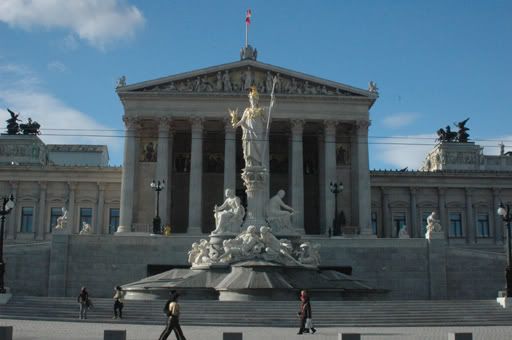 The Greek Revival façade of Vienna’s Parliament with a 15 foot statue of Athena, the goddess of Wisdom
The Greek Revival façade of Vienna’s Parliament with a 15 foot statue of Athena, the goddess of Wisdom Hofburg Palace – residence of the Habsburg emperor until 1918. It was originally designed as a medieval castle, but only the chapel remains. A number of different wings were added as successors to the throne throughout the centuries became more powerful. Today it is home to the state Treasuries, the Imperial Apartments, the Imperial Silver Collection, Swiss Courtyard, The Hofburg Chapel, the Imperial Chancery Wing, Amaila’s Wing and Leopold’s Wing. So you need about a week to see it all.
Hofburg Palace – residence of the Habsburg emperor until 1918. It was originally designed as a medieval castle, but only the chapel remains. A number of different wings were added as successors to the throne throughout the centuries became more powerful. Today it is home to the state Treasuries, the Imperial Apartments, the Imperial Silver Collection, Swiss Courtyard, The Hofburg Chapel, the Imperial Chancery Wing, Amaila’s Wing and Leopold’s Wing. So you need about a week to see it all. On a foggy afternoon we ventured a bit out of town to visit the Schonbrunn Palace. Although it was huge, it did not compare to that of Versailles. There was not much to the gardens either as winter is upon us.
On a foggy afternoon we ventured a bit out of town to visit the Schonbrunn Palace. Although it was huge, it did not compare to that of Versailles. There was not much to the gardens either as winter is upon us.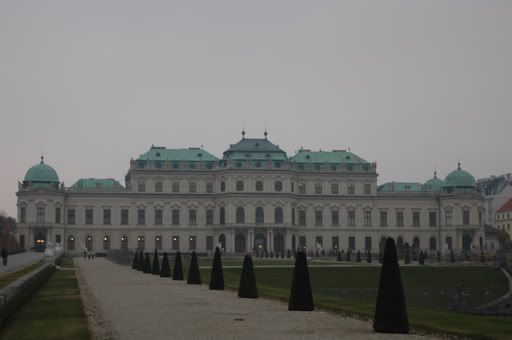 Closer into town is the Belvedere Palace which now houses the Austrian Gallery. We visited the gallery and saw the works of many famous artists. Austria’s own Gustav Klimt was well represented here as one of his famous piece, “The Kiss” was on display.
Closer into town is the Belvedere Palace which now houses the Austrian Gallery. We visited the gallery and saw the works of many famous artists. Austria’s own Gustav Klimt was well represented here as one of his famous piece, “The Kiss” was on display.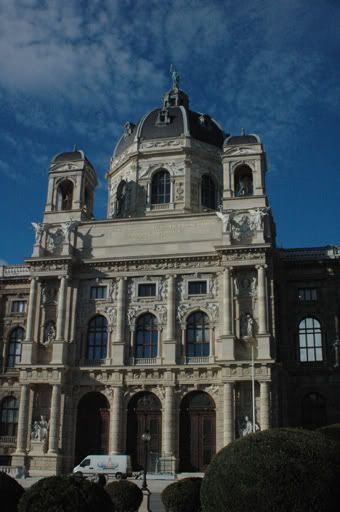 Kunsthistorisches Museum – Museum of Fine Arts. Ranks as one of the richest and most important art collections in the world. It houses the Royal Family’s private collection with major works by Rubens, Rembrandt, Vermeer, Durer, Raphael, Titan and Velazquez. It was built between 1871 and 1891.
Kunsthistorisches Museum – Museum of Fine Arts. Ranks as one of the richest and most important art collections in the world. It houses the Royal Family’s private collection with major works by Rubens, Rembrandt, Vermeer, Durer, Raphael, Titan and Velazquez. It was built between 1871 and 1891. Liechtenstein Museum one of the finest privately owned museums in the world. We had wanted to see some of the works by artists such as Rubens, and Rembrandts and made a special trip to this museum. We thought that the red carpet was for us, but unfortunately the museum was closed the day we were there.
Liechtenstein Museum one of the finest privately owned museums in the world. We had wanted to see some of the works by artists such as Rubens, and Rembrandts and made a special trip to this museum. We thought that the red carpet was for us, but unfortunately the museum was closed the day we were there.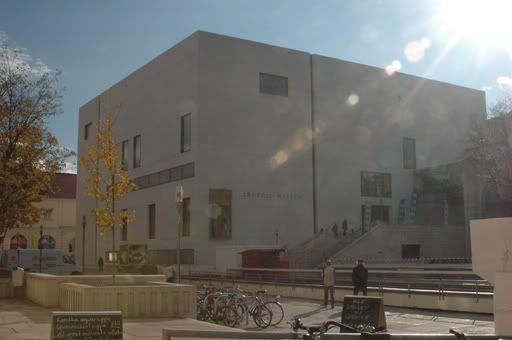 Leopold Museum has one of the largest selection of works by Egon Schiele. This newly designed museum opened in 2001 and is the most distinctive building in the Museum Quarter
Leopold Museum has one of the largest selection of works by Egon Schiele. This newly designed museum opened in 2001 and is the most distinctive building in the Museum Quarter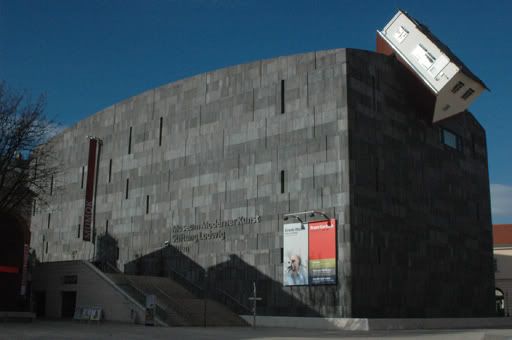 Museum of Modern Art – houses modern and contemporary art like the house that is attached to the side of the actual building. Yeah I think we will pass.
Museum of Modern Art – houses modern and contemporary art like the house that is attached to the side of the actual building. Yeah I think we will pass.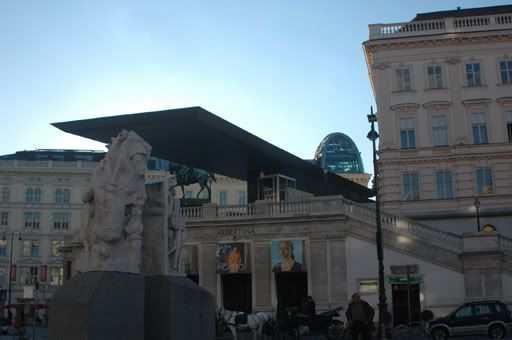 Perhaps the most interesting of all museums from an architectural point of view. 19th century buildings with modern touches that add interest and flare to the look of the building. It is quite interesting. The museum is supposed to have works by Rubens, Klimt, Cezanne, and Durer, but not this day. Picasso was the artist of choice, and since we had already seen most of his work in Paris it was not worth the 9 Euros to be mesmerized again.
Perhaps the most interesting of all museums from an architectural point of view. 19th century buildings with modern touches that add interest and flare to the look of the building. It is quite interesting. The museum is supposed to have works by Rubens, Klimt, Cezanne, and Durer, but not this day. Picasso was the artist of choice, and since we had already seen most of his work in Paris it was not worth the 9 Euros to be mesmerized again. Vienna’s most significant example of ecclesiastical Baroque architecture by far. Completed in 1739 and the dome is 236 m high making it a dominant feature in Vienna’s skyline. Today it is the Historical Museum of the City of Vienna
Vienna’s most significant example of ecclesiastical Baroque architecture by far. Completed in 1739 and the dome is 236 m high making it a dominant feature in Vienna’s skyline. Today it is the Historical Museum of the City of Vienna Interior of St. Michael’s Church – sculpture of the descent of Lucifer at the high alter
Interior of St. Michael’s Church – sculpture of the descent of Lucifer at the high alter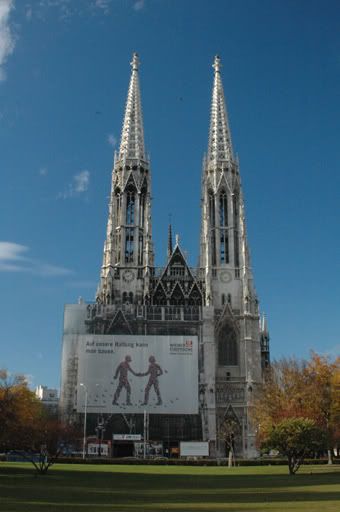 Exterior of Votive Church under renovation
Exterior of Votive Church under renovation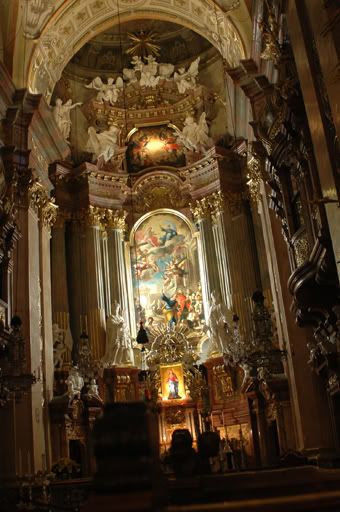 High Alter of St. Peter’s Church
High Alter of St. Peter’s Church The dome at St Peter’s Church – it reminded me of the Hagia Sofia in shape
The dome at St Peter’s Church – it reminded me of the Hagia Sofia in shape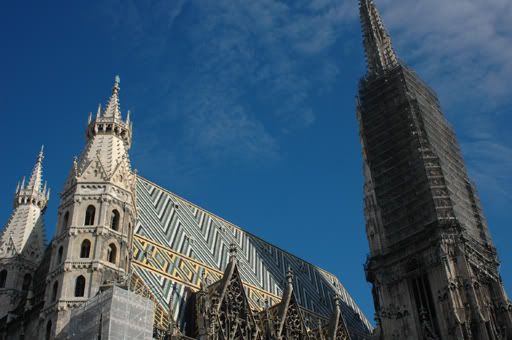 St. Steven’s Cathedral in the center of town
St. Steven’s Cathedral in the center of town Interior of St. Steven’s Cathedral
Interior of St. Steven’s Cathedral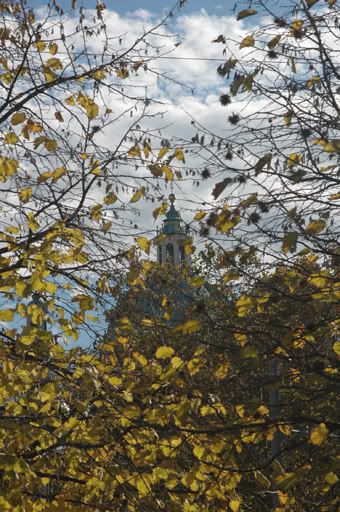 Winter is upon us
Winter is upon us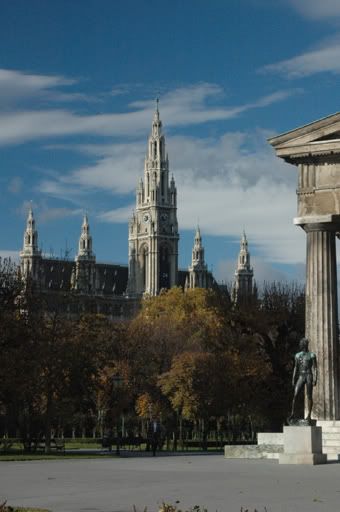 Vienna’s City Hall
Vienna’s City Hall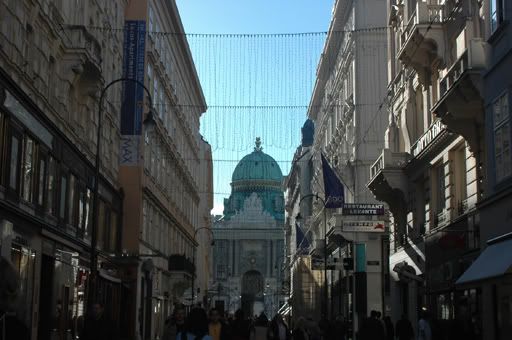 Kohlmarkt – Ritzy shopping area of Vienna. You can see signs of the holiday season coming on
Kohlmarkt – Ritzy shopping area of Vienna. You can see signs of the holiday season coming on The Plague Column dedicated to the end of the Plague that saw a loss of more than half of Vienna’s population
The Plague Column dedicated to the end of the Plague that saw a loss of more than half of Vienna’s population Memorial to WWII
Memorial to WWII Ankler Clock – an astrological clock
Ankler Clock – an astrological clock A great use of material, the red you see is actually steel allowed to rust in its natural state
A great use of material, the red you see is actually steel allowed to rust in its natural state Money and Power - Ernst Bank and St Steven’s Cathedral
Money and Power - Ernst Bank and St Steven’s Cathedral  A pretty interesting building
A pretty interesting building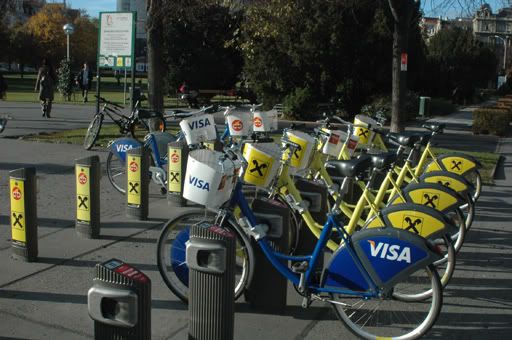 In addition to having a great recycling program, Vienna is a very green city. Bike stands can be found throughout the city (like the ones above). You simply rent them and return them to the original location or any other stands throughout the city. What a great idea
In addition to having a great recycling program, Vienna is a very green city. Bike stands can be found throughout the city (like the ones above). You simply rent them and return them to the original location or any other stands throughout the city. What a great idea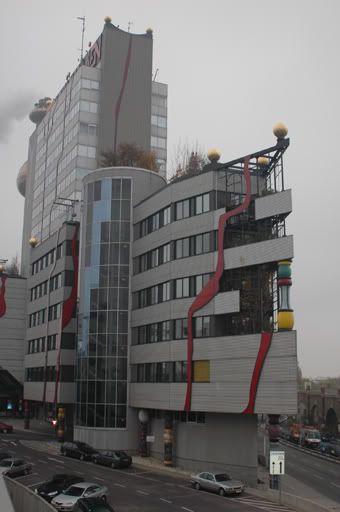 City Dump? You got it, even the city dump is pretty cool looking
City Dump? You got it, even the city dump is pretty cool looking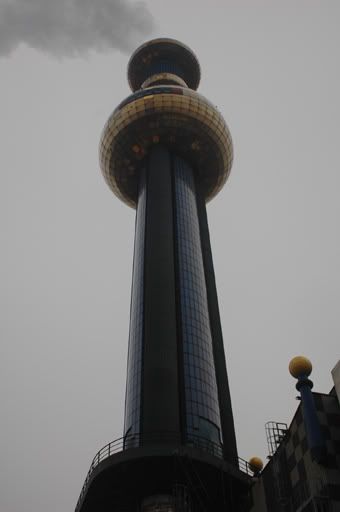 The chimney of the incinerator for the city’s garbage disposal found right within the city limits
The chimney of the incinerator for the city’s garbage disposal found right within the city limitsAustria’s historical past has not always been viewed to have contributed positively on an international stage. Vienna, the capital city has felt the brunt of the criticism the hardest, being the birthplace of Adolf Hitler and the seat of past right wing leaders. Putting politics aside, Austria’s cultural identity lies deep within the core of Vienna’s rich aristocratic past. At the height of the Hasburg empire during the 18th and 19th centuries, scores of musicians such as Beethoven, Brahms, Haydn, Mozart and Schubert flourished here in Vienna, creating a period of classical music far more superior then those before and after it. But more than just music, Vienna also brought to the international scene, Strauss Jr ‘s waltz, Freud’s psycho-analysis, and some of Europe’s great artists - that of Klimt, Ruben, and Rembrandt, and architects Wagner and Loos. As a tribute to these and other great artists, Vienna has more then 20 great museums that show case their artistry well, although the entrance fees are a bit pricey. Each museum has priceless art but each of the buildings is quite stunning as well. They are all worth a visit. Other places of note are the numerous churches that can be found throughout the city.
Their devotion to the Catholic Church is evident by the number of churches and cathedrals punctuated throughout the city center and beyond. The austere Gothic revivals of both St. Steven’s Cathedral and Vollite Church can be ranked along side to those found in France, Italy and Spain, and the high Baroque of the Renaissance is superbly captured in St. Peter’s Church, where harmony, proportion and decadence are exuded in great artistry.
From our encounters with its people and its sites, we found Vienna to be a pleasant city with all the richness and diversity of a major city but still having a quiet charm. Vienna was worth a visit and one that we enjoyed immensely.
Chunger the unemployed bum































No comments:
Post a Comment